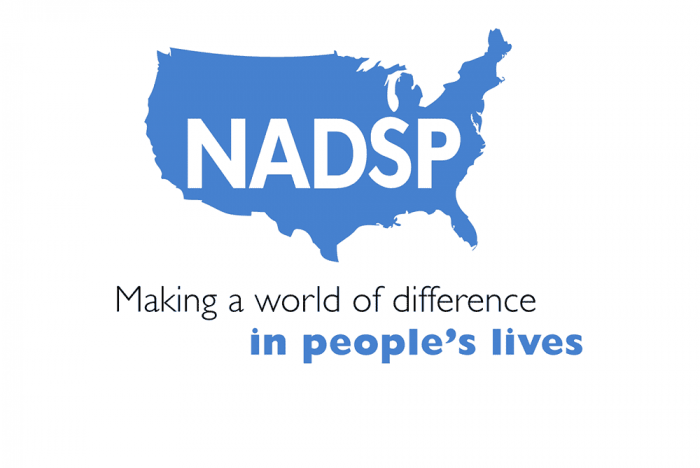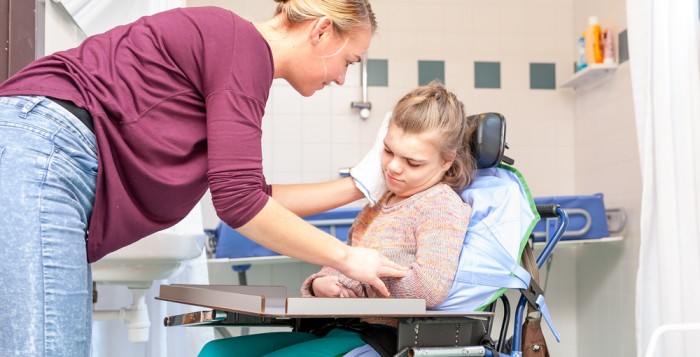Workforce Crisis
A Mom’s Nightmare: Where Will Derrick’s ‘Safe Place’ Be If I Can’t Find or Hire a DSP?
Residents Urging Action on Workforce Crisis
In the last month, more than 2,500 residents have contacted the administration and their local state senators and representatives urging them to address the workforce crisis affecting Pennsylvania’s human services sectors.
The outreach has been extraordinary! But we can’t stop now.
The House and Senate will be wrapping up their annual budget hearings over the next few days and turning their attention to crafting the commonwealth’s final spending plan before the end of the fiscal year on June 30.
If you haven’t done so already, please reach out and urge lawmakers to increase funding to support human services professionals so individuals and families in need get the support and care they deserve. Ask your networks to do the same.
Pennsylvania is sitting on billions of federal dollars and state “rainy day” funds that could increase wages to help us attract and retain human service professionals. Yet, even as this workforce crisis worsens, the money remains unspent as the needs of our most vulnerable residents go unmet.
The outpouring of support so far is evidence of how this crisis is affecting individuals and families, as well as the providers and professionals who want to serve them.
But we need to do more…and we need to sustain the effort.
Please VISIT HERE to learn how you can help. Follow us on Facebook and Twitter to stay informed of our progress. Most importantly, TAKE ACTION TODAY. Tell lawmakers to increase funding to address the workforce crisis facing Pennsylvania’s health and human services.
Thank you for your continued support.
Pa. Counties Call for Funding Biden’s Mental Health Strategy
In a Lopsided Battle for Labor, Nonprofits Struggle to Staff Up Amid Increased Demand for Services: RCPA Members Pressley Ridge and Emmaus Community of Pittsburgh, Inc. Quoted
Last Chance to Register for the 2022 NADSP Advocacy Symposium
2022 NADSP Advocacy Symposium: Amplifying The Voices Of Direct Support Professionals
March 9–10, 2022
Register Now!
Over 300 Direct Support Professionals (DSPs), self-advocates, and family members from almost every state in the country are set to embark on NADSP’s first ever national advocacy event next week on March 9 and 10. The purpose of this virtual event is to bring the DSP perspective to the forefront of Congress and the Administration during a time of unprecedented workforce challenges.
The NADSP recognizes the previous absence and critical importance of lifting the voices of DSPs to federal policy-makers so that public policy can be informed by the people who are on the frontlines of supporting people with disabilities to live, work, and thrive in the community. This 1.5-day virtual symposium will culminate with virtual meetings with Congressional leaders and staff to educate and advocate on NADSP’s public policy priorities for 2022.
Registration will close TONIGHT, March 2, 2022, at 8:00 pm EST.
ODP to Participate in the 2021 NCI Staff Stability Survey
ODP Announcement 22-022 is to inform all provider agencies employing Direct Service Providers (DSPs) that the Office of Developmental Programs (ODP) will be participating in the 2021 National Core Indicators® (NCI) Staff Stability Survey. ODP is requesting qualified providers participate in the 2021 Staff Stability Survey. This important survey includes questions relating to volume, stability, compensation, and benefits of DSPs serving adults 18 years of age and older.
The data gathered from this voluntary and anonymous survey will help ODP, along with other policy makers and advocates, to:
- Inform policy and program development regarding DSP workforce (DSPW) improvement initiatives;
- Monitor and evaluate the impact of workforce initiatives;
- Compare state workforce outcomes with those of other states;
- Provide context for consumer and family outcomes; and
- Create systems that more effectively collect, analyze, and use DSP workforce data.
Within the next few weeks, providers will receive an email from HSRI inviting them to participate in this Staff Stability Survey. Those wishing to participate will be furnished with a unique login that will enable providers to directly enter survey responses into the HSRI database. Results of the survey will only be reported in the aggregate, and organizations will not be identified in any way. It is recommended that Human Resources or the Payroll Office complete surveys, and responses should reflect DSPs who were on agency payroll during any period between January 1 and December 31, 2021.
The deadline to complete data entry is June 30, 2022. A copy of the survey is included to allow for preparation of data prior to completing data entry. It is a proprietary tool of the National Core Indicators® and is to be used for reference only.
SafeinHome Offers Drop-In Hours: Independence For Those You Serve, Staffing Help For You
With the staffing crisis showing no signs of easing, the need for help supporting the Intellectually and Developmentally Disabled community has never been more acute. SafeinHome has numerous tools to help enhance independence and self-direction while helping to ease staffing shortages. David Thom, Account Executive in the Philadelphia Region, has scheduled drop-in hours for the next few weeks to discuss how Remote Supports (RS) and Assistive Technology (AT) can help the people we all serve.
SafeinHome invites you to learn about their Remote Supports and Assistive Technology during office hours at the following times via Zoom or Teams. Whether you’d like to talk about a specific individual, or just discuss Remote Supports and Assistive Technology in general, please feel free to join the office hours or reach out any time via the contact information below:
Tara Harmening, Southwestern PA, 724-433-9401
Every Tuesday 10:00 am–11:00 am through 3-15-22
Visit here to join the meeting.
Season Jackson, Northeastern PA, 570-840-2240
Every Thursday 9:00 am–10 am through 3-24-22
Visit here to join the meeting.
Christina Romel, Western PA, 412-779-3100
Every Tuesday 11:00 am–12:00 pm
Visit here to join the Zoom meeting.
Kristie Ondisco, Central PA, 570-640-0663
Every two weeks on Wednesdays 1:00 pm–2:00 pm, starting 3-23-22 to 4-20-22.
Visit here to join the meeting.
David Thom, Southeastern PA, 510-333-4909
- Thursday, 2-24-22 — 2:30 pm–3:30 pm
Visit here to join the Zoom meeting. - Tuesday, 03-01-22 — 10:00 am–11:00 am
Visit here to join the Zoom meeting. - Wednesday, 03-02-22 — 2:00 pm–3:00 pm
Visit here to join the Zoom meeting.
Visit SafeinHome’s website for more details.


















